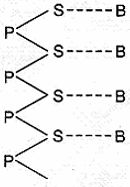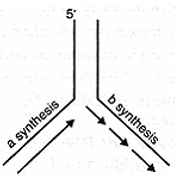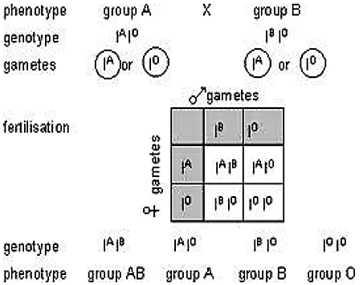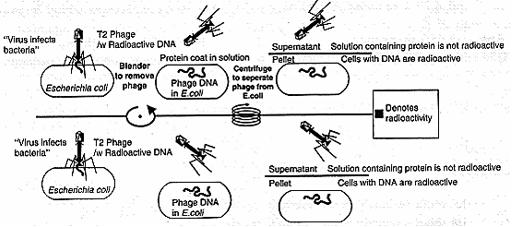Molecular Basis of Inheritance - Test Papers
CBSE Test Paper 01
Ch-6 Molecular Basis of Inheritance
- State the use of molecular medicine?
- Used to understand several diseases like Alzheimer’s Parkinson's diseases, etc.
- Used as gene therapy
- Improves diagnosis of diseases
- All of these.
- DNA fingerprinting or genetic finger printing is the process of
- Matching the fingerprint of different persons
- Analyzing VNTR samples of DNA obtained from body fluid or cells
- Finding similarities of finger shapes of different individuals
- Comparing the DNA of two individuals
- DNA probes used in finger printing are
- Highly sensitive electron microscope
- UV beams
- X-ray scanners
- DNA segments having radioactive isotopes
- Best method to determine paternity is
- Protein analysis b. gene counting c. chromosome counting d. DNA fingerprinting
- A gene of operon which synthesizes a repressor protein is
- Structural gene b. Regulator gene c. Operator gene d. Promoter gene
- What is the distance between two base pairs in DNA?
- Refer to the following diagram and answer the given question

What type of bond is represented by the dotted lines? - Khorana and his colleagues synthesized an RNA molecule with repeating sequence of AG nitrogenous bases (AG AG AG AG AG AG). It produced a tetrapeptide with alternating sequence of valine and tyrosine. It proves that codon for valine and tyrosine are?
- Name the types of synthesis 'a' and 'b' occurring in the replicating fork of DNA as shown below:

- What is teminism?
- Mention two functions of the codon AUG.
- Differentiate between the process of transcription in prokaryotes and eukaryotes.
- A Couple quarrelled with the hospital authority on suspicion that their child had been exchanged after birth. The couple based their argument on the fact that their child is O blood group whereas they are A and B blood groups respectively. The doctor smiled and explained.
- What values of the doctor is reflected here?
- How can the child be O blood group as explained by the doctor?
- Which test method can be considered authentic to identify the biological parents of the child?
- Name the other blood group(s) which the child could have inherited.
- Differentiate between leading strand and lagging strand.
- How did Hershey and Chase prove that DNA is the hereditary material? Explain their experiment with suitable diagrams.
CBSE Test Paper 01
Ch-6 Molecular Basis of Inheritance
Answer
- All of these, Explanation: The application of the power of molecular genetics to the problems of human disease plays an important role in many of the research programs in the Department of Biology.
Several complementary approaches are used by our research groups. The power of genomic analysis is used to identify, isolate and characterize genes which cause and contribute to the etiology of human diseases.
Human disease is also studied through the functional analysis of key genes: low density lipoprotein receptors in atherosclerosis and stroke; a broad spectrum of tumor suppressors and oncogenes in cancer, genes directly leading to the disease etiology in neuromuscular disorders such as Alzheimer's, Huntington's disease, and muscular dystrophies.
- All of these, Explanation: The application of the power of molecular genetics to the problems of human disease plays an important role in many of the research programs in the Department of Biology.
- Analyzing VNTR samples of DNA obtained from body fluid or cells
Explanation: VNTR analysis (sometimes called DNA fingerprinting) can be used to identify and match cell samples. In order to use VNTRs, we must have a source of DNA. The DNA can come from any nucleated cell, e.g., white blood cells, skin samples, semen samples, or hair folicles. Red blood cells cannot be used as they do not have a nucleus.
For a VNTR analysis, the DNA is extracted and cut using restriction endonucleases. A Southern Blot is then performed using various probes.
- Analyzing VNTR samples of DNA obtained from body fluid or cells
- DNA segments having radioactive isotopes, Explanation: In finger printing the nylon membrane was incubated with radioactive probes. DNA Probes are small fragments of minisatellite DNA tagged with radioactive phosphorous. The probes only attach to the pieces of DNA that they are complementary to – in this case they attach to the minisatellites in the genome. Radioactive isotopes can be easily identified using scanner.
- DNA fingerprinting, Explanation: DNA paternity testing is the most accurate form of paternity testing possible. If DNA patterns between the child and the alleged father do not match on two or more DNA probes, then the alleged father can be totally ruled out. If the DNA patterns between mother, child, and the alleged father match on every DNA probe, the likelihood of paternity is 99.9 percent.
- Regulator gene, Explanation: Regulator gene is a gene that regulates the expression of one or more structural genes by controlling the production of a protein (such as a genetic repressor) which regulates their rate of transcription. Regulation of lac operon by repressor is called negative regulation.
- The diameter of the B-DNA is ~20 Angstroms, and the distance between base pairs is ~3.4 Angstroms. The base pairing of opposite strands is stereochemically selective, Adenine always pairing with Thymine, and Guanine with Cytosine.
- Hydrogen
- Codon for valine - AGA
Codon for tyrosine - GAG - 'a' - synthesis of leading / continuous strand.
'b' - synthesis of lagging / discontinuous strand. - Reverse transcription is known as teminism, which was first reported by Temin and Baltimore. RNA of some viruses (Retroviruses) first synthesizes DNA through reverse transcription. The DNA then transfers information to RNA, which takes part in translation of coded information to form polypeptide.
- (i) It codes for methionine amino acid.
(ii) It acts as initiator codon for protein synthesis Transcription in Prokaryotes Transcription in Eukaryotes (i) Products of transcription become effective in situ. (i) Products of transcription come out of the nucleus for functioning in cytoplasm. (ii) There is only one RNA-polymerase. (ii) Three RNA polymerases take part in it. (iii) mRNA is polycistronic. (iii) mRNA is monocistronic. (iv) Splicing is not required. (iv) Splicing is required for removing introns. - The doctor was assertive, patient and pragmatic.
- It is possible if the parents are heterozygotes, i.e. Ai x Bi. If the child receives i from both the parents, it becomes ii, and expresses the O blood group. See the chart below:
Summary of possible Child blood typesParent A blood type Parent B blood type possible Child Blood type A A A, O A B A, AB, B, O A AB A, AB, B AB AB A, AB, B B B B, O B AB A, AB, B O O O O A A, O O AB A, B Rh+ Rh- RH+, Rh- Rh- Rh- Rh- Rh+ Rh+ Rh+, RH- - DNA fingerprinting
- A or B or AB

Leading strand Lagging strand 1. It is a replicated strand of DNA which grows continuously without any gap. 1. The lagging strand is a replicated strand of DNA which is formed in short segments called discontinuous. 2. It does not require DNA ligase for its growth 2. DNA ligase is required for joining okazaki fragments. 3. The direction of growth of a leading strand is 5' 3' 3. The direction of the lagging strand is 3' 5' 4. Only a single RNA primer is required 4. Starting of each okazaki fragment requires a new RNA. 5. Its template opens in 3' 5' direction 5. Its template opens in 5' 3' direction 6. Formation of leading strand begins immediately at the beginning of replication. 6. Formation of lagging strand begins a bit later than that of leading strand. - Hershey - Chase Experiment (1952) Hershey and Chase conducted their experiments on the T2 phase, a virus. The phase consists only of a protein shell containing its genetic material. In a first experiment, they labelled the DNA of phages with radioactive phosphorus - 32 (the element phosphorus is present in DNA but not present in any of the 20 amino acids from which proteins are made). They allowed the phages to infect E.coli, then removed the protein shells from the infected cells with a blender and separated the cells and viral coats by using a centrifuge. They found that the radioactive tracer was visible only in the pellet of bacterial cells and not in the supernatant containing the protein shells. In a second experiment, they labelled the phages with radioactive Sulfur-35 After separation, the radioactive tracer then was found in the protein shells, but not in the infected bacteria, supporting the hypothesis that the genetic material which infects the bacteria is DNA.
